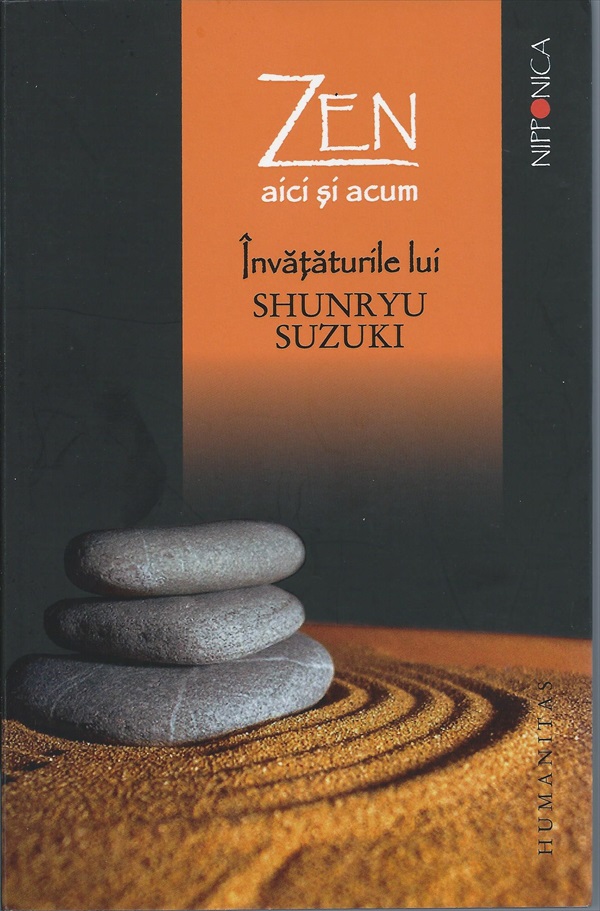Core Books by and about Shunryu Suzuki Books by DC
|
ZEN IS RIGHT HERE: Teaching Stories and Anecdotes of Shunryu Suzuki, Author of Zen Mind,
Beginner's Mind
Edited by David Chadwick DC Link Page By Shunryu Suzuki Paperback / Shambhala Publications / 160 pages / 4 7/8 x 7 ISBN 978-1-59030-491-4 / October 2007 click on book cover to enlarge Shambhala Publications link - Hit the Ebook link below "Other Formats" down the page on the right and see a number of options. at local indie bookstore | on Amazon San Francisco Zen Center Bookstore Zen Is Right Here pub date is October 9, 2007 Zen Is Right Now: More Teaching Stories and Anecdotes of Shunryu Suzuki - new 2021 |
|
12-17-13 - Adding the Introduction to ZIRH and tomorrow the Acknowledgements. 6-21-13 - Front Matter of ZIRH 6-19-13 - Images scanned from the original version, To Shine One Corner of the World - Kobun Chino and Katrin Otogawa's jointly calligraphed character for shine, hikari, and two Shunryu Suzuki brushed English phrases. JPEG of first Suzuki calligraph entered onto anecdote #66 - hope. 6-16-13 - ZIRH End Matter Glossary, Further Reading, Acknowledgments 12-19-12 - Zen Is Right Here Anecdote Index 12-18-12 - Holliday shopping suggestions from cuke.com Zen Is Right Here: Teaching Stories and Anecdotes of Shunryu Suzuki the first anecdote:
The whole name, with subtitle, in Japanese appears to be long like the American version. (Zen Is Right Here: Teaching Stories and Anecdotes of Shunryu Suzuki, Author of "Zen Mind, Beginner's Mind") zen wa ima koko senkiyuuhiyakurokujiyuunendai amerika ni zen o hirometa suzuki shiyunriyuu no oshie to itsuwa (some weird romanization there maybe from translation software for web)That translates as the Zen (is) Now Here: teaching of Shunryu Suzuki (who) spread Zen in Sixties America anecdotes Here's a link to a page for the book on Yes Asia. Issho Fujita wrote me that the translator is "Toru Shimakage, the president of Sangha, a Buddhist publishing company, maybe the most active in publishing books on Buddhism in Japan now. I just did proof reading and editing. And I wrote a commentary on the significance of Suzuki Roshi in Zen in America." More on Issho FujitaDC introduction to the Japanese translation.
9-15-12 -
ZIRH is being posted all over the Internet posing as
an ad campaign for men's skin care products but which is actually a
subliminal campaign to promote another ZIRH, namely
ZIRH - cuke --- ZIRH - Shambhala Publications --- ZIRH - Google Books (21 reviews) ZIRH - iTunes (for download) --- ZIRH - Amazon --- ZIRH - Amazon Kindle So when you see ZIRH posted all over the Internet, remember - Zen Is Right Here: Teaching Stories and Anecdotes of Shunryu Suzuki. ZIRH and the Colbert Challenge DC on Shunryu Suzuki and So Forth Praise for this book in its former incarnation
Introduction to Shine One Corner letter from Mitsu Suzuki on To Shine One Corner of the World (posted 19-03-14) 6-16-12 - From yesterday's Who Is Meditating? : There is a Burmese saying, "You are not meditating, meditation is meditating." Reminds me of: "Don't ever think that you can sit zazen! That's a big mistake! Zazen sits zazen!" from ZEN IS RIGHT HERE: Teaching Stories and Anecdotes of Shunryu Suzuki It's in some other languages. Here's the Romanian cover:
When Peter Schneider learned that To Shine One Corner of the World was going to be used for the original name of this book he objected. Peter and his wife Jane lived over twenty years in Japan and he said that that phrase was assiciated with Tendai Buddhism and shouldn't be attributed to Suzuki. I thought a lot of what he said was from various sources in Japanese culture and religion and it was a little late to make any changes to book. The Tendai connection isn't acknowledged but it's also not attributed to Suzuki. From the Introduction of that edition:
The title of this book is a well-known phrase from the Lotus Sutra attributed to Shakyamuni Buddha. Suzuki referred to it on a number of occasions, usually translating it "to light up one corner," but in one lecture he said:
Suzuki Roshi often played with words, and his use of the word "shine" that day may have been a whimsical substitution. It lends itself to various interpretations—as do many of the encounters in this book. Note for sf shine - From USF prof John Nelson’s paper:
According to this official, the national office’s current focus is on three areas that affect local temples directly. The first is following up the 1200 year commemoration event for the founding of the denomination, observed in 2006. Its theme emphasized how each person could follow special precepts established by Saichô, the founder of Tendai Buddhism. The second campaign is one that has been functioning since 1969 for over forty years--the “Light Up Your Corner (of the World)” (Ichigo terasu) movement. The section chief said that, “This will develop a more spiritual society, with concern for others and volunteer activities stemming from our Buddha-nature (hotoke kokoro) and a feeling of plentitude.” He went on to note how the phrase ichigo terasu has been adopted by schools and businesses that have nothing to do with Tendai, but which want to promote the idea of happiness for oneself and others. “This is Tendai’s way of being socially engaged with society.” Steve Covell has detailed the ichigo terasu movement in his book Japanese Temple Buddhism.
Finally and perhaps most important
for local temples, the national headquarters plans to begin a campaign that
educates the general public about the origin of the Japanese funeral ritual.
Given the current dissatisfaction felt by many people regarding funeral
services, this campaign is intended to “increase general appreciation of this
important cultural tradition,” and, one might suppose, drum up more business for
local priests as ritual specialists. For more on the history of funerals in
Japan and Tendai’s role in shaping these traditions, see Bodiford, JJRS special
edition, and the Bukkyô Jiten. |
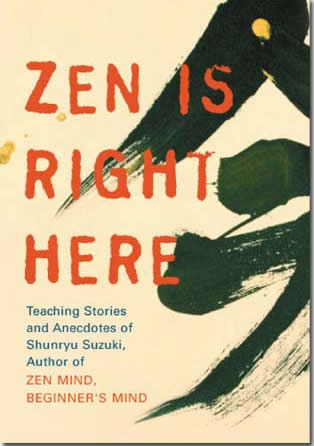
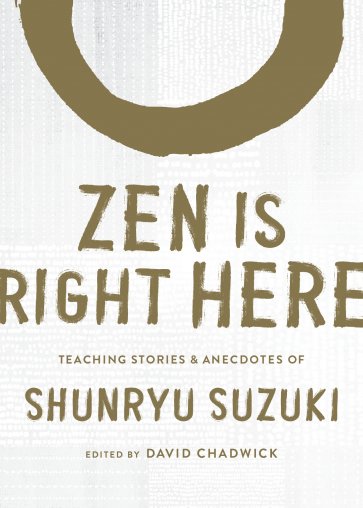
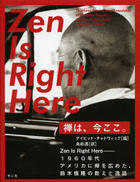
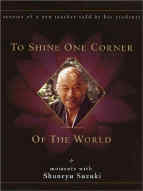 Zen Is Right Here
Zen Is Right Here
